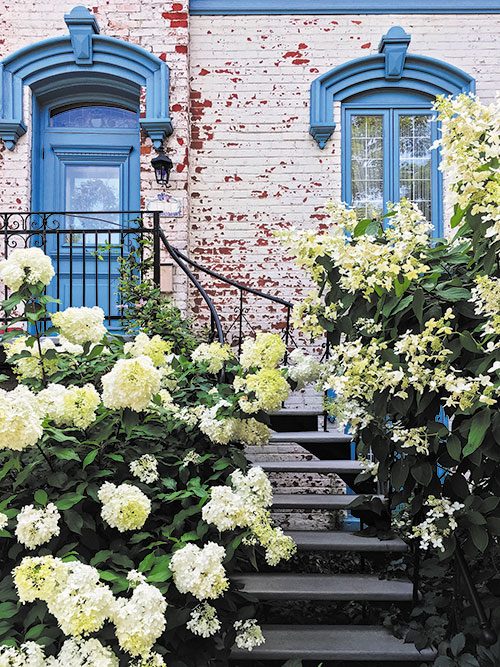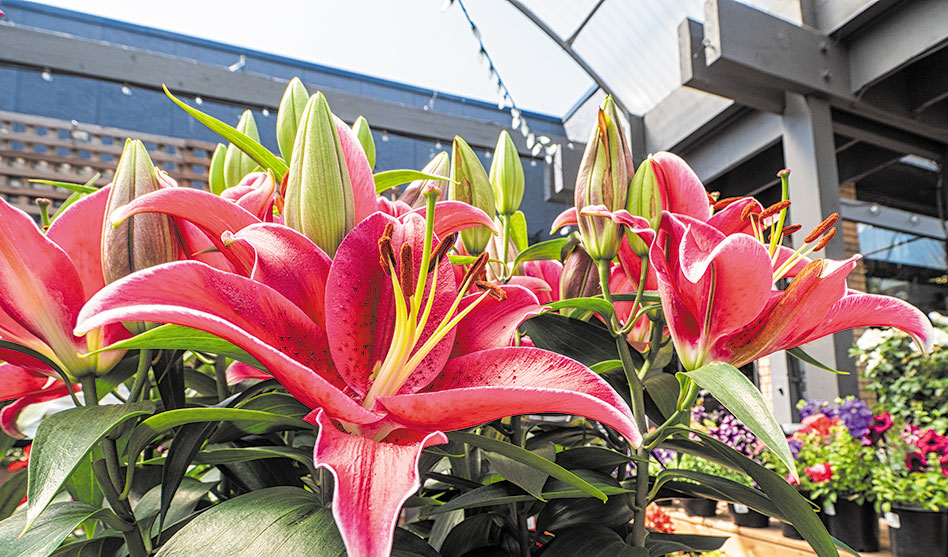Stargazer lilies are not only shockingly beautiful but produce a sweet fragrance and thrive in Texas soils, above; gardenia shrubs can line a walkway, below.
The smell of your garden may be as important as the look of it
AROMATHERAPY
![]()
When we decorate our living environments, we usually think in terms of colors, textures, shapes and spaces.
But what about aromas?
The smell of a room, or a garden, probably has just as much to do with establishing the mood of your home as the look of it.
We asked Dave Forehand, vice president of gardens at the Dallas Arboretum, to compile a list of smell-worthy plantings to make the style of your home sensible… and scents-able.
— Arnold Wayne Jones
Banana shrub (Michelia figo) received its common names because its flowers smell like ripe bananas. It blooms heavily in the spring with cream-colored, one-inch flowers that look like tiny magnolia blossoms edged with crimson. Blooming will continue sporadically throughout the summer. The plant is evergreen and has glossy, deep green leaves that are three inches long, making it a great backdrop for other garden plants. Banana shrub can be planted near an entryway or window so that its fragrance can be enjoyed indoors. Once established, banana shrub is quite drought-tolerant and can work in various light conditions, making it a versatile plant for North Texas.
Fragrant tea olive (Osmanthus fragrans) has some of the most fragrant blossoms of any plant. You can smell the aroma up to 100 feet away. You may never find the flowers because they are tiny — but plentiful. It is a small, upright, evergreen tree or large shrub that will typically grow to 10–15-feet tall. (There is a variety called Carl Wheeler that has a very nice growth habit and many more leaves than the regular osmanthus. Plant it at the corner of your house, and you will smell it all over your yard.)
 Texas mountain laurel (Sophora secundiflora) is an evergreen shrub/tree that is native to South Central Texas. It has glossy-green oval leaves and can grow in full sun or shade. Once established, it is very drought-tolerant. In the spring, it produces long spikes covered in purple blossoms. These purple flowers smell just like grape bubblegum. How fun is that? This Texas native is a great choice for North Texas landscapes.
Texas mountain laurel (Sophora secundiflora) is an evergreen shrub/tree that is native to South Central Texas. It has glossy-green oval leaves and can grow in full sun or shade. Once established, it is very drought-tolerant. In the spring, it produces long spikes covered in purple blossoms. These purple flowers smell just like grape bubblegum. How fun is that? This Texas native is a great choice for North Texas landscapes.
Hyacinth is an early-spring-blooming bulb, and the flowers have a very sweet aroma. You can plant hyacinth in your landscape in late fall or early winter. Putting them in a container near a door will allow you to smell them when you come and go. Indoors, you can force a hyacinth to bloom by putting the bulb in a container like a glass and filling it with pebbles and water and setting the bulb on top of the pebbles. It will grow roots into the pebbles and will bloom just like in the spring. It will make your house smell wonderful.
Gardenia (Gardenia jasminoides), is also known as cape jasmine, is an evergreen shrub that typically grows to a height of 3 to 8 feet, depending upon the cultivar. Spread is usually about the same as the height. The foliage of healthy shrubs is glossy, dark-green, 2–4 inches long and half as wide. Depending on the cultivar, the flowers can be either single or double and from 2–4 inches in diameter. Gardenias are primarily grown for their fragrant flowers and handsome foliage. They should be planted where people will notice the fragrance. They are waxy, white and very fragrant. Many consider them the most fragrant flower. The flowers open over a long period of time, from May through June, and sporadically throughout the summer.
Stargazer lily is a hybrid variety of the oriental lily group. This is a very popular lily that is easy to grow and can be planted in spring or fall. The flowers have a strong sweet fragrance and can bloom for 4 to 6 weeks. Plant them in a large container near your door or on a patio or balcony and enjoy beauty and aroma.
![]()

